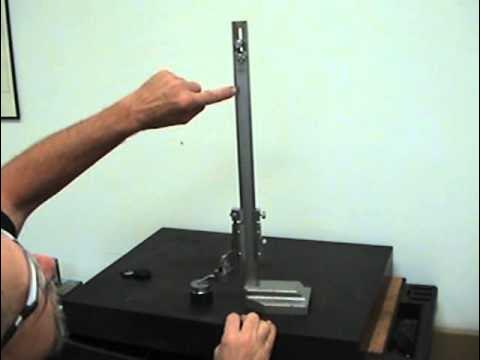Misure ed errori
Summary
TLDRThis video discusses measurement and errors in scientific experiments, emphasizing that no measurement is perfectly precise. It introduces key concepts such as uncertainty, average values, and different types of errors—random errors, caused by human factors, and systematic errors, related to equipment. The process of calculating the average value and absolute error is explained using an example of weighing an object, and it highlights how sensitivity of the measuring instrument plays a role. Finally, the video demonstrates how to represent the measured value with its associated uncertainty.
Takeaways
- 📏 Measurement always involves error, as no measurement is perfectly precise.
- 🧐 Errors in measurements are often referred to as 'uncertainty'.
- 📊 The 'mean value' of multiple measurements is indicated with a bar over the symbol.
- ⚖️ Two types of errors exist: random errors (caused by human factors like fatigue or inattention) and systematic errors (caused by faulty instruments).
- 📐 Random errors are unpredictable and depend on the person, while systematic errors are related to the measurement tool's limitations.
- ➕ The mean value is calculated by summing all measurements and dividing by the number of measurements.
- ⚙️ The absolute error (uncertainty) is determined by subtracting the minimum value from the maximum value and dividing by two.
- 📉 The absolute error reflects the uncertainty in measurements and is usually presented with the same unit of measurement.
- 📝 When writing the result, it's important to show the mean value followed by 'plus or minus' the absolute error.
- ⚠️ The absolute error should also match the sensitivity of the instrument used, and it provides an indication of how far the measured value is from the true value.
Q & A
What is the main topic of the video?
-The video discusses measurements and errors in scientific experiments, focusing on the concept of uncertainty in measurements.
Why is it said that there is no such thing as a perfectly precise measurement?
-Even with the utmost care, every measurement involves some level of error or uncertainty, making a perfectly precise measurement impossible.
How is 'uncertainty' defined in the context of measurements?
-Uncertainty refers to the range of possible values around a measured quantity, indicating the potential error in the measurement.
What are the two main types of errors in measurements?
-The two main types of errors are random errors, which occur due to factors like human fatigue, and systematic errors, which arise from issues with the measuring instruments.
What is the difference between random errors and systematic errors?
-Random errors are unpredictable and caused by human factors, such as attention lapses, while systematic errors are consistent and stem from flaws in the measuring equipment.
How is the average (mean) value of a set of measurements calculated?
-The average value is calculated by summing all the measured values and dividing by the number of measurements taken.
What is the formula for calculating the absolute error in a set of measurements?
-The absolute error is calculated by subtracting the minimum measured value from the maximum measured value and dividing the result by two.
How do you represent the final measurement result, considering the error?
-The final measurement is written as the average value plus or minus the absolute error, including the unit of measurement. For example, 10.26 ± 0.05 kg.
What role does the sensitivity of the instrument play in measurement?
-The sensitivity of the instrument is the smallest difference it can detect, and it often matches the absolute error in the measurement.
Why is it important to consider both the average value and the error in scientific measurements?
-Considering both the average value and the error provides a more accurate representation of the measurement by acknowledging potential deviations from the true value due to errors.
Outlines

Cette section est réservée aux utilisateurs payants. Améliorez votre compte pour accéder à cette section.
Améliorer maintenantMindmap

Cette section est réservée aux utilisateurs payants. Améliorez votre compte pour accéder à cette section.
Améliorer maintenantKeywords

Cette section est réservée aux utilisateurs payants. Améliorez votre compte pour accéder à cette section.
Améliorer maintenantHighlights

Cette section est réservée aux utilisateurs payants. Améliorez votre compte pour accéder à cette section.
Améliorer maintenantTranscripts

Cette section est réservée aux utilisateurs payants. Améliorez votre compte pour accéder à cette section.
Améliorer maintenantVoir Plus de Vidéos Connexes
5.0 / 5 (0 votes)






